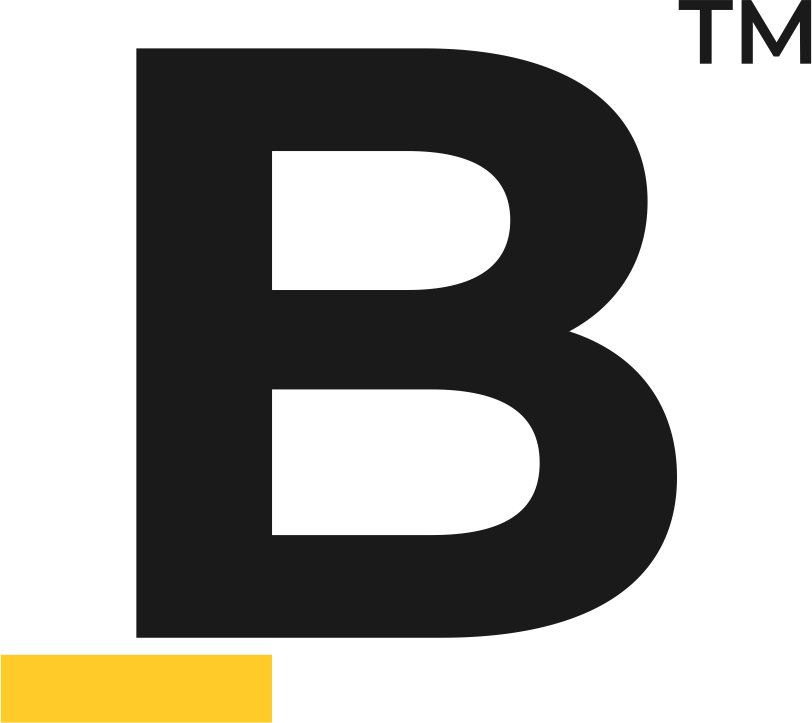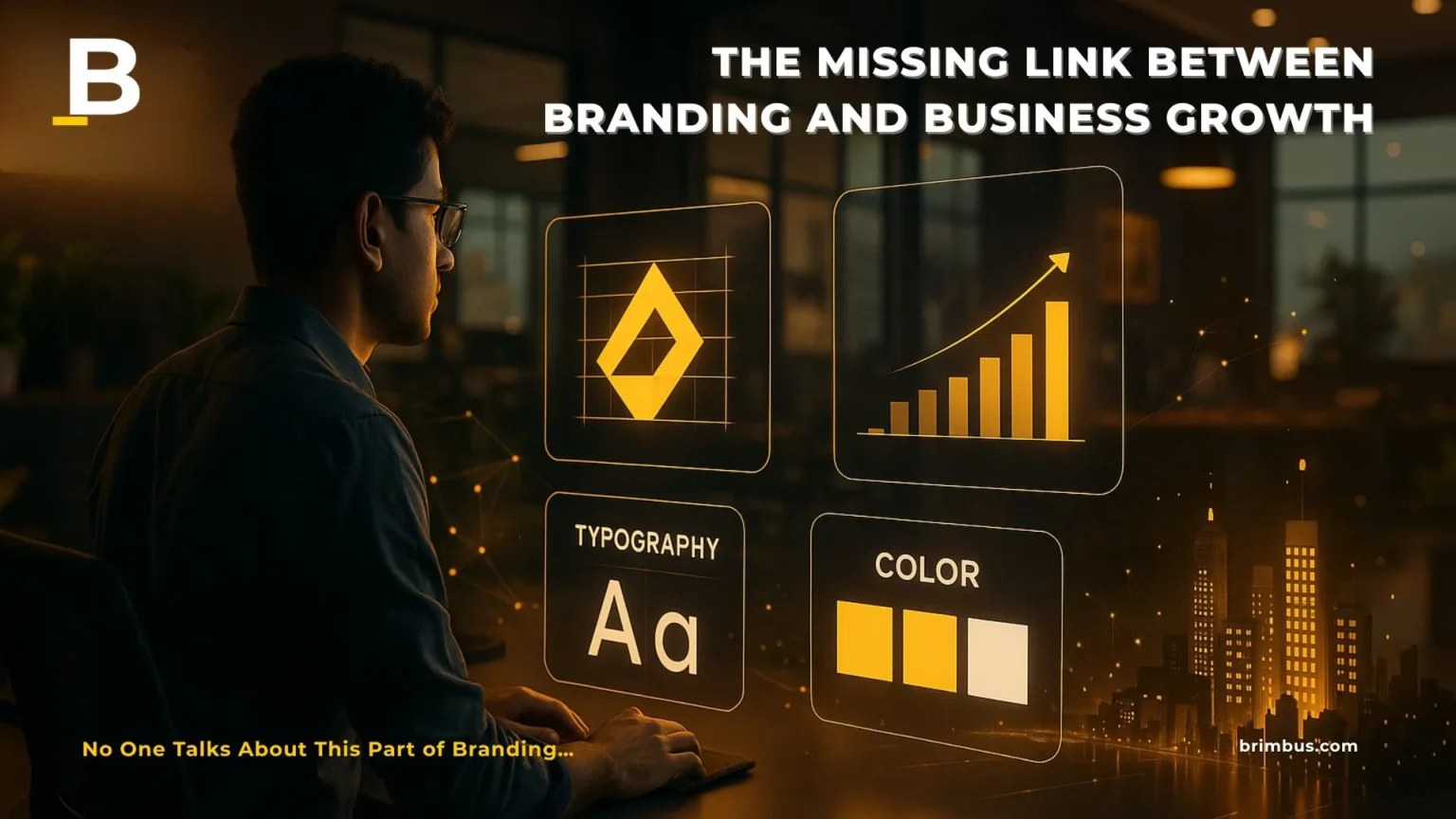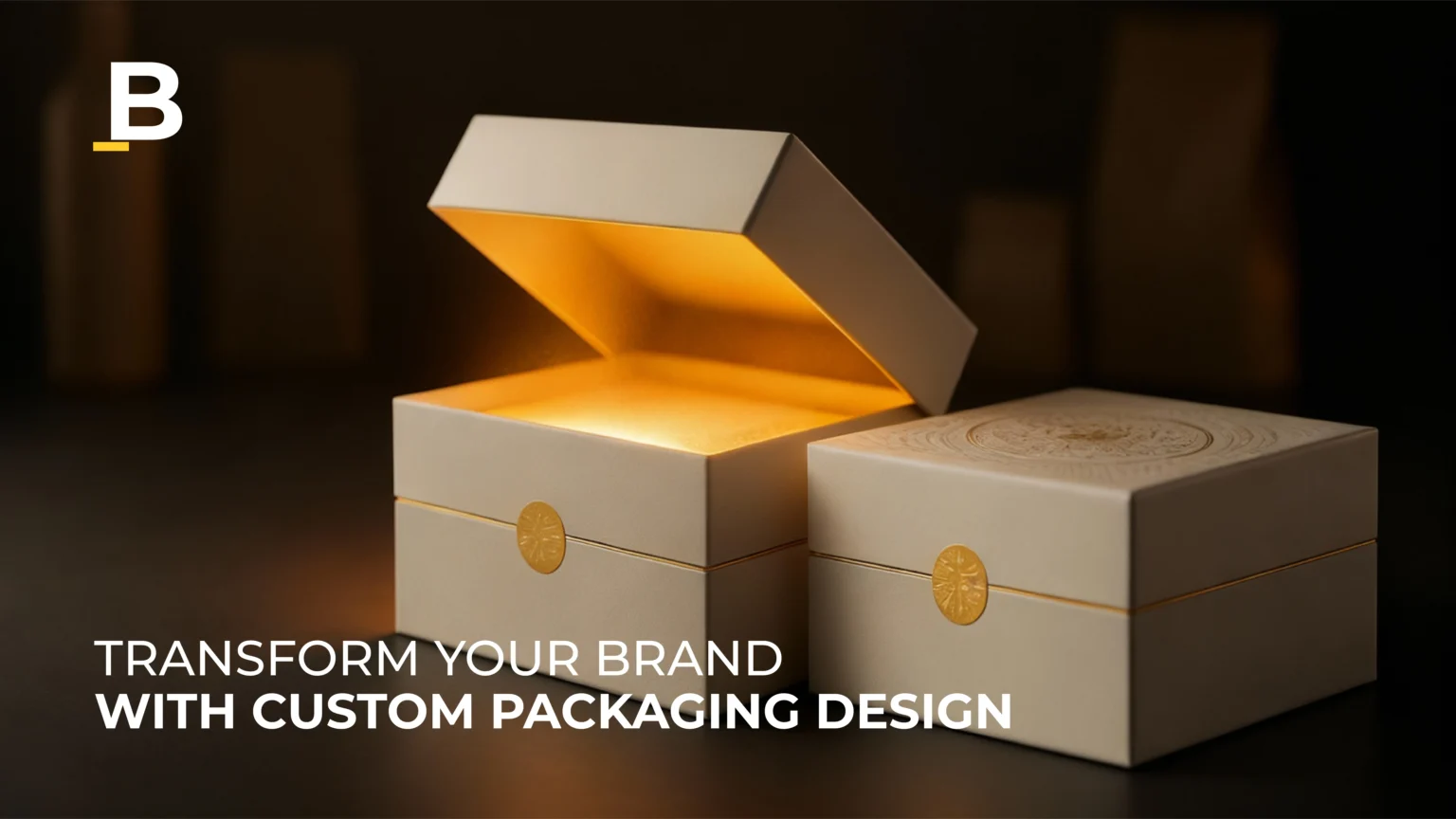Corporate Identity Design: The Missing Link Between Branding and Business Growth

Recent Posts
Share this article:
Corporate identity is a collection of visual, verbal, as well as strategic elements that hold the potential to define how you, as a company, would present yourself to the world. Corporate identity design is not just about logos or maintaining a colour scheme; rather, it is a holistic approach to building an entire brand personality of your business that remains consistent across all platforms.
Now, talking about the link between branding and business growth, that to be honest has been ignored or not valued for years now it is essential to understand that in today’s digital market, brands are no longer competing on the basis of products or services. Today, there stands a new entity in terms of business growth and having an edge over the competition, and that is your own corporate identity design.
An entity that has been overlooked for years, but is a very strategic part that connects how your company looks or feels to how the world communicates with your brand. As a branding agency, we believe at our core that corporate identity design is one such factor that holds the potential to translate a company’s brand values into tangible experience by creating consistency and bridging the gap between branding efforts and real business growth.
The purpose of this blog is to bring light to the fact of how identity design can make the difference between making your brand be remembered or forgotten.
What makes the foundation of a business identity design in modern branding?
While modern branding has evolved a lot, the foundation still remains the same, which is the timeless principles. When we are talking about the heart of a business identity design, which is also called a brand identity system, sometimes there are a few fundamental elements which make sure that your business looks, feels, and communicates consistently and becomes the foundation of your business.
- Core brand strategy
The foremost step in building the foundation of your business identity is defining the core brand strategies, which are the purpose, vision, target audience, positioning, including the mission and vision of your brand. This is because without this initial brand strategy, your business identity design stands at the risk of becoming decoration in place of a growth driver.
- Visual identity system
There is no doubt with the fact that logos make the centre of your brand identity, but when it comes to modern branding, the visual marks of your brand have the opportunity to be flexible and system-based rather than being fixed. While the primary logo remains the main symbol or wordmark of your brand representing the business, there are alternative, responsive versions that are adaptations of digital, print, and small-scale use. Then there is iconography, which is other visual marks that are either simplified marks or favicons for apps and your social media.
- Verbal identity
A very underrated part of corporate branding is the verbal identity of your brand voice, tone, taglines, messaging framework, and overall storytelling approach. This is because the whole idea of building a verbal identity as a part of your corporate branding is to make your brand connect with your audience to an extent so that it creates a level of emotional resonance with your consumers in a way that communicates your brand value and personality as well.
In addition to these, an essential and non-negotiable part of corporate identity design that builds the foundation of your business branding is having brand guidelines. So when you partner with a branding agency, the foremost step is to make a playbook for your brand with rules and standards that ensure a certain level of consistency is followed across all platforms and terms.
Having well-crafted brand guidelines ensures that you protect your brand integrity for years to come. Be it your brand’s website, social media, packaging, presentations, signage, or internal communications, a branding agency makes sure that every interaction that your consumers have with your brand feels the same throughout.
For a branding agency like us, building a corporate identity design means backing your brand with a strategic ecosystem that brings together vision, visuals, and voice that would come together cohesively in a manner to build recognition, trust, and overall growth.
Why does corporate identity design define your brand’s core DNA in 2026?
It is 2026 we are talking about, where the marketplace has drastically become faster, noisier, and more competitive than ever. Given that, this circumstantial market not only rejects surface-level branding but also holds the potential to bash your business. It is the same when it comes to corporate identity design as well, because it has become the true DNA of your brand. This is because the business identity design that you give your brand not only shapes how your corporate identity design looks, sounds, or connects across all touchpoints, but also makes sure that even in this crowded digital space, your brand is remembered, even when you are growing, adapting and connecting with various other businesses everywhere.
Here is how a branding agency helps in defining your corporate design, which goes on to become the core of your business branding:
- Clarity in a noisy world
Why is corporate identity design important? Today, markets are saturated, and the digital attention span stands at its lowest time ever. Under such conditions, building a strong identity system that acts like the genetic code of your brand and keeps all the expressions of your brand consistent and instantly recognisable. And a branding agency does the same by building you a clear DNA, as without it, your business is always at risk of getting blurred in the competition.
- Authenticity and trust
Another reason that leads to a corporate identity design defining your business in this digital era is that today’s markets are filled with consumers who demand value, transparency, and social responsibility. This is where a well-crafted corporate identity design holds the potential to communicate with your consumers and not only sell but also translate what you stand for. So, be it fonts, colours, language, or imagery, when you build your corporate identity design strategically, it becomes an opportunity for you to communicate inclusivity, innovation, sustainability, as well as luxury, according to what you would want.
- Omnichannel consistency
When it comes to corporate branding today, you need to understand one thing, which is the fact that businesses are no longer one-dimensional entities; rather, they live across websites, apps, AR/VR, AI chatbots, packaging, and physical spaces. Being present consistently on all is what makes a good corporate identity design reflect as a master blueprint. A blueprint that makes sure that your business behaves the same everywhere, just as DNA coding cells would in the same organism.
- Emotional connection
While crafting a business identity design, an experienced branding agency knows the importance of working alongside the emotional connection. This is because it doesn’t matter if you are crafting for a corporate identity design or a creative brand, people always buy feeling first and then features. This makes it essential to make sure that your corporate identity design holds the potential to encode all the feelings into experiences. Moreover, when we are talking about evoking an emotional connection in your corporate identity design, it is essential to take care of the fact that the emotional triggers are constantly aligning with your business’s values.
- Scalability and adaptability
Why corporate design identity has become the core of businesses today is because, with the growth in emerging new markets, new products, and AI-powered personalisation, corporate branding is one approach through which you can provide rules and flexibility, which holds the potential to allow integration of variations in your business branding while keeping your business recognisable.
- Cultural relevance
Being culturally relevant is one thing that each and every brand is running after. Why, though?. As a business, you can translate your stance through well-thought-out and executed corporate identity design that includes the desired cultural values to showcase either inclusive visuals, ethical storytelling, or future-friendly design choices.
- Strategic alignment
Corporate identity design, being the core of your business branding, definitely holds more importance than being a decoration;n, it has significant significance in building the visual and verbal expression of your business strategy that not only links purpose, vision, and values of your business but also connects with the marketplace or any other external expression.
In addition to this, a corporate identity design defines your business’s DNA in 2026 because it stands as the genetic blueprint of your business that not only makes sure that you gain clarity, trust, and consistency in this all time fast-evolving world but also translate your businesses’s strategy, values, and personality in a way that makes your business recognizable, repeatable, as well as emotionally resonant in a manner that signals your target customers to instant build the aimed connection with your business.
The ultimate corporate branding essentials: How to create a cohesive visual identity system?
Now that you know the importance of a well-crafted corporate identity design for your business, the next question that comes in is how you can have such a cohesive visual identity system for your business that aligns with your brand vision and mission. Well, the businesses that stand out do not only sustain on essentials, rather they also build a corporate identity design that builds a system integrated with intentional, strategic, and cohesive identity frameworks that not only unify every consumer of your business to interact but also separate you from the industry leaders to make your own identity yours.
Being in the branding agency for more than 5 years now, at Brimbus, we think that building a true corporate identity design is all about designing an operating system for your business that is not only scalable and recognisable but also is flexible enough to sit right in all the future touchpoints of your branding.
Here is a complete breakdown of the ultimate corporate branding essentials that are needed for creating a unified visual identity system in 2026 for your business:
Start with a strategy
If you are working alongside an experienced branding agency, we will always start with building core identities rather than visuals. At this stage, we define why your business exists, what the unique role of your business is in the market, and who you want to speak to through your vision. The strategy here is to work on the genetic code, which in corporate identity design is known as the expression of your brand.
- Typography system
The next essential in creating a cohesive visual identity system for your business is to work on the typography system that includes the primary typeface defining your brand’s personality such as modern, classic, human, and tech-driven along with the secondary typeface that not only supports the functions such as the body copy, data, and digital interfaces but also becomes the guidelines for the headings, subheadings, body, and captions. It is underestimated, but when it comes to building a cohesive corporate identity design, typography acts as the voice of your business in a visual form.

- Colour palette
In building a desired visual identity system for your business, the colour palette also plays an essential role. Be it using 1-3 primary colours that become the anchor of your brand, or extending the palette to take in a few supporting shapes for gaining a certain level of flexibility and depth, the functional colours of your brand should hold the potential to evoke an emotional trigger that aligns with your brand’s personality. Moreover, when you work alongside an experienced branding agency, you get systematic tints of your brand colours for matching the UI states, alters, and data visualisation to meet the WCAG standards.
- Imagery and graphic language
When it comes to creating a cohesive visual identity system, imagery and graphic language play an essential role. Be it the photography style or the illustration system, it is essential to have well-defined iconography guidelines. It could be anything from line thickness, corner radius, and the use of colour for an impactful and cohesive visual identity.
- By creating a dynamic design system
When it comes to corporate branding guidelines, moving ahead of the static brand guidelines and building a visual identity system that gives your brand a living design system. This can be achieved by integrating elements such as component libraries comprising buttons, cards, and grids along with templates for social, web, and presentations by motion and interaction rules for an overall digital experience for your brand, as this allows the design team to work faster and maintain a visual integrity across all your platforms, be it online or offline.
In addition to this, documenting all your style guidelines is an essential part of maintaining a cohesive visual identity. But what should the document comprise? Well, a logo usage rule along with colour and typography specs, imagery, illustrations, and tone-of-voice examples with dos and don’ts of each guideline.
Corporate branding vs. brand identity: Where do they overlap?
We saw what corporate branding and brand identity are and how they help in setting up your brand narrative, but is it also confusing to you? Though so, well, corporate branding is the overall strategy that shapes how a company is perceived in the market within its audience, as well as in the minds of stakeholders. Corporate branding is all about a combination of reputation, values, and emotional connection, whereas brand identity can be defined as the visual and tangible expression of that same corporate branding. It is brand identity that makes your brand recognisable instantly.
Moreover, to draw a much clearer difference between corporate branding and brand identity, let us understand the key elements that make up each concept.
If we go by definition, corporate branding focuses on brand positioning and its mission, tone of voice, and vision in a consistent way across all platforms.
Corporate branding can also be considered as the personality and reputation of your organisation.
Similarly, brand identity is the visual and tangible expression which covers the logo variations, colour palette, typography, packaging design and other marketing materials that are responsible for answering how the world visualises your brand.
That’s about the definition, but the confusion of where these two concepts overlap persists. Well, you see, the overlap happens because brand identity marks as a subset of corporate branding. While your identity holds the potential to communicate your brand’s strategy, values, and personality visually, corporate branding sets the tone.
Even when you are planning to build a perception for your brand, corporate branding defines the reputation you want, whereas brand identity shapes how that perception is perceived visually.
Apart from this, you can draw the difference as one defining what your brand stands for and how you want your brand to be seen, and another as how your brand looks and feels to the world.
Brimbus case study: How can you build a corporate branding that lasts?
It is all about creating a relatable brand. You see, corporate branding is no longer about making your brand look good; rather, it is about building something timeless, cohesive, and easy to access for your audience.
At Brimbus Productions Pvt Ltd, we take a tested approach in building a corporate branding that lasts. Here’s an insight into how a successful corporate branding should be crafted!
- Begin by defining a strong brand foundation and mapping out the brand personality, followed by documenting the mission and positioning to guide further.
- Develop a cohesive visual identity to connect the strategy and perception while maintaining consistency across all digital and offline touchpoints.
- We focus on building a living brand system rather than a static one by creating a dynamic design system with a focus on the brand to scale visually without losing cohesion.
- The next step in crafting corporate branding is making it a part of their internal culture by sticking with the consistent tone of voice in communications.
All of these steps are backed by consistent adaptation without losing the original essence. At Brimbus, our teams make sure to go through regular audits as per the guidelines for matching the trends while staying true to the core values.
Frequently Asked Questions:
Q1) What is corporate identity design, and why is its importance?
Corporate identity design is a complete system of visual, verbal, and strategic elements which holds the potential to define how your company presents itself to the world.
The importance of it lies in creating recognition, consistency, and trust within your brand.
Q2) How does corporate identity design differ from corporate branding?
Corporate branding is the overall strategy which shapes how your brand will be seen within the audience by setting the brand tone and identity that communicates visually.
Q3) Can a strong corporate branding identity drive business growth?
Yes, a strong corporate branding builds recognition, trust, and emotional connection, which in turn increases consumer recall value and drives you to a scalable system that brings growth.
Conclusion
In conclusion, the corporate identity system holds the potential to do more than just make your brand look good. Rather, when you go ahead strategically, it translates that strategy effortlessly into tangible business growth.
So be it by implementing cohesive visual as well as verbal systems where each step is responsible for contributing to a framework that is crafted to give your brand recognition, consistency, and scalability.
Moreover, it is that gap which brings branding and business growth hand-in-hand by turning the planned strategy into experiences and ideas into visuals and values that drive recognition and growth even in the competitive market.
Hence, if you also want to get a grasp on the digital landscape, then investing in a strong corporate identity no longer stands as an option; rather, it stands as a definite way of driving business growth while staying true to the narrative.














